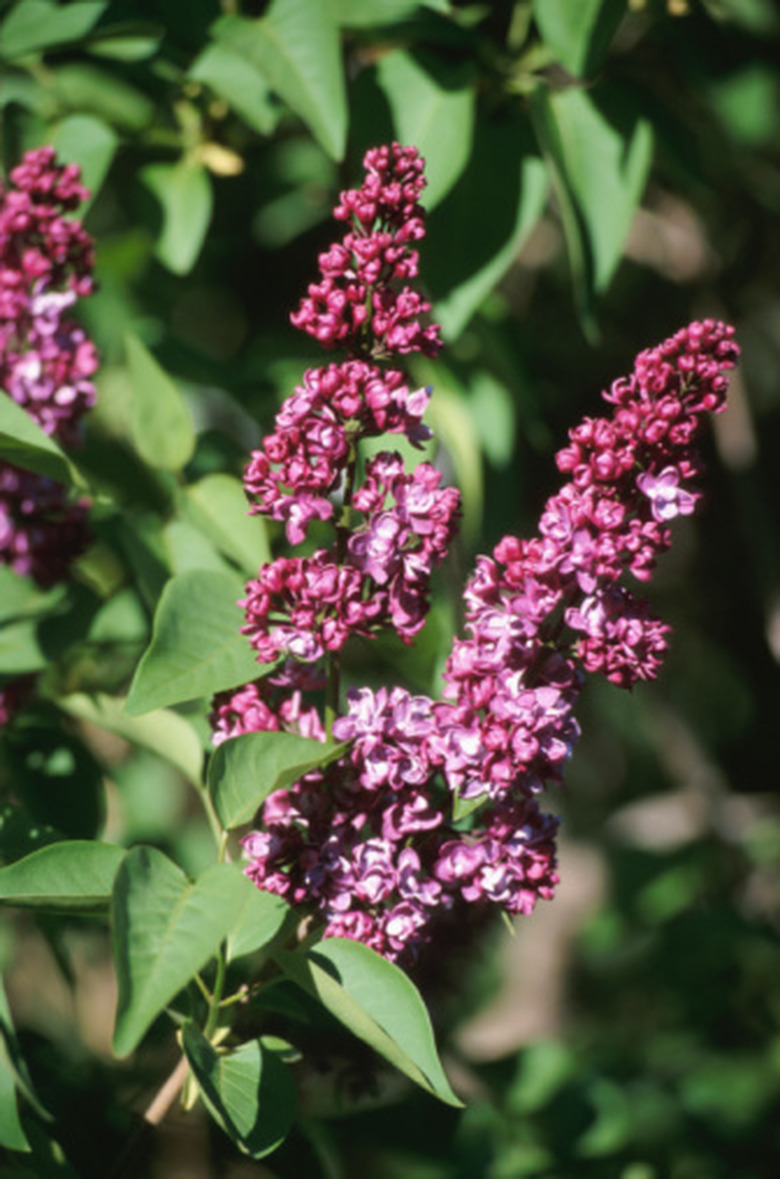Are Lilac Bushes Toxic?
Your favorite flower may be the common lilac (Syringa vulgaris), a shrub with a huge purple flower that is both fragrant and showy. Lilacs have experienced popularity for generations and have been used for a variety of purposes. Some people believe that lilac is poisonous, but this is not so — no part of the lilac is toxic. In fact, the flowers of the lilac bush are actually edible, though their flavor varies widely.
Basic Information
Lilacs are medium- to fast-growing shrubs with a height of 8 to 15 feet and a width of 6 to 12 feet. These southern European natives are popular and common all across the United States, being cold hardy up to U.S. Department of Agriculture hardiness zone 3. Lilacs make excellent screens or privacy hedges because of their dense growing habits and low maintenance requirements.
- Your favorite flower may be the common lilac (Syringa vulgaris), a shrub with a huge purple flower that is both fragrant and showy.
- In fact, the flowers of the lilac bush are actually edible, though their flavor varies widely.
Lilac Flowers
Old fashioned lilacs only sport lavender flowers, but through hybridization and selective breeding, today's lilacs appear in an impressive array of colors such as white, yellow, pink, magenta and purple. There are even varieties with variegated leaves, such as Dappled Dawn. Flowers are edible and the flavor is said to range from no flavor to a grass-like flavor to what can only be described as a "lilac" flavor.
Lilac Species
Several species of lilacs exist, attesting to their popularity. Chinese lilac (Syringa x chinensis) is often used as a windbreak on farmsteads. Miss Kim lilac (S. patula 'Miss Kim') has significant ornamental value for its very rounded form and slow, dense growth. Korean dwarf lilac (S. meyeri 'Palibin') is an excellent choice for lilac lovers who are short on space — it only grows 6 to 7 feet tall.
- Old fashioned lilacs only sport lavender flowers, but through hybridization and selective breeding, today's lilacs appear in an impressive array of colors such as white, yellow, pink, magenta and purple.
- Chinese lilac (Syringa x chinensis) is often used as a windbreak on farmsteads.
Lilac Uses
Beyond being beautiful ornamental bushes or effective screens, lilacs have a high amount of utility. Some are used for windbreaks to help fight soil erosion, while others serve as nesting spots for wild birds. Lilacs are popular municipal shade plants, appearing in parks and along municipal walking trails. Flowers are often cultivated for their fragrance, which is used to perfume a variety of toiletries.
